In his artist statement for a recent exhibition at the Institute of Visual Arts, John Riepenhoff used Colby cheese to make a comment on regionalism. His bio describes him as an “artist, curator, gallery director, art fair co-organizer and inventor of artistic platforms for the expression on others.” Although it may sound like hyperbole, all of those titles accurately define the multifaceted practice of the Milwaukee-based creative. I first encountered John at the 2006 Milwaukee International Art Fair, where I had the honor of working the Ooga Booga booth. I was stunned that John and his collaborators had managed to gather The Suburban, Gavin Brown’s enterprise, White Columns, CANADA, Karma International, and more in the community center/bar/bowling alley of the Polish Falcons Beer Hall. I distinctly remember the after party: Spencer Sweeney was DJ-ing and I was dancing on a spaceship with artists from Oslo, New York, and Iowa City. It remains my most favorable art fair experience. Since 2004, John has run The Green Gallery, which offers an innovative program of fun, rigorous artwork. I’ve exhibited alongside John, worked with him at The Green Gallery, constructed booths with him for 12+ hours at the Swiss Institute, and long admired his work. As he’s simultaneously winding down from participation in the NADA Art Fair in Miami and gearing up for his forthcoming exhibition at Peregrine Program in Chicago, I thought it would be fitting to talk with John about being an artist/curator/gallery director/art fair co-organizer/inventor in the Midwest (and beyond).
Martine Syms: Every time I see you, you’re excited about something. It makes me psyched! What are you hyped on right now?
John Riepenhoff: Wow, thanks Martine. Seeing shows manifested at the Green Galleries hasn’t lost its excitement so this really new series of paintings Scott Reeder has hanging at Green Gallery East has me thinking about accessibility of modernist paint themes in a fashionable way. Then this fall, I started a permanent John Riepenhoff Experience at Los Angeles’s newest addition to Chinatown, Pepin Moore.
MS: You opened Green Gallery when you were 22. How has it changed since you first opened and would you do it over again?
JR: Over the years, The Green Gallery turned from one sky blue-colored attic space in Riverwest to two white-walled galleries, a storefront on Milwaukee’s East side, and a warehouse a few blocks from where the first attic space incarnated. The community of artists that show at the gallery went from mostly Milwaukee artists to an expanding group of international artists. The addition of Jake Palmert, my partner at the gallery, has made the amount of projects the gallery can accomplish more than double. We can still do strange experiments in exhibiting, but [we can] also be a resource for curators and collectors who are interested in the pulse of the conceptual art scene in Milwaukee and beyond.
I still try to ask questions about where value in art comes from and try to make the art function for the people involved in that system. More people are involved through patronizing, exhibiting, and dialoguing about the gallery now than ever, so there are more factors to juggle and it can take an effort to deliver thoughtful, interesting, and accountable programming.
I could see doing it all over again, but circumstances could lead to opening a bar, noodle shop, or music venue. Starting the second gallery in 2009, nearly five years after the first Green Gallery opened, might be evidence that I’ll continue opening more galleries.
MS: What is happening at Green Gallery West now that you’ve moved your operations crosstown? I heard through the grapevine about Skybar. Can you tell me more about that?
JR: Skybar is the new DJ booth at Green Gallery West. While we’re renovating the Milwaukee Club Nutz into Comedy Dreamz, a bed and breakfast, I thought it would be good to build a place for DJs to play during our openings. Milwaukee artist Neil Gasparka and I converted the gallery’s janitor closet and skylight into a DJ booth and beverage cooling spot. The DJs play up above the room, in the sky. Under the lounge, we installed the original Dark Fair booth prototype that I made in 2008 for our project at the Swiss Institute. Programing here starts in December with a Techno Snake solo show.
When Club Nutz re-opens, it will have a bed, floral wallpaper, an alarm clock that will transform into a DJ booth, a record spinning council and [the] classic comedy brick wall at night. We’ll literally have two night clubs stacked on top of each other and we’ll have to face some sound decision making. Now that Club Nutz proprietors Tyson and Scott Reeder and Elysia Borowy-Reeder are living full-time in Chicago, they’ve opened an additional branch there too. These guys, along with Nicholas Frank, the curator of Inova, are all collaborators in the Milwaukee International/Dark Fair team.
MS: How did Green Gallery Press, the publishing arm, develop? Do you see a relationship between curating and publishing?
JR: Our newest book was released December 5 at Woodland Pattern Book Center in Milwaukee. It’s a collection of lectures by Stephen Wetzel called Occasional Performances and Wayward Writings, but I think it should be called Super Readable Things about Culture-Rich Media But Really about Life that Will Make a Pleasant Impact on Your Mind. Steve invited me to design the cover, a great honor, and my brother Joe edited the book. The entire Green Gallery Press project is a collaboration with Joe, the editor, and the artists we invite to publish. I absolutely see a relationship between curating and publishing. A major mode of mine has been to support artists in an attempt to document the changing ideas around me. Art objects, books, performances all do something to explain a bit of what we’re going through. The Green Gallery Press has always been an ancillary document of exhibitions and programing at the Green Gallery, but we want the printed material to have its own life. Instead of typing or printing what’s in each show, we invite artists to submit writing projects they have in parallel to their paintings or films. Green Gallery Press has gotten attention in the writing world and I’m really interested in how people trained in one method of making can influence people trained in another.
MS: Do you see yourself in competition with other artists or gallerists?
JR: I’m interested in originality over superiority as I establish some sort of place. I’ve had amazing models that gave me confidence in running a gallery program as if it was an art-producing work-of-art in itself. If the gallery is an art machine, then some other artist-gallerists that are in a league above me are Michelle Grabner [of the Suburban], Gavin Brown [of Gavin Brown’s Enterprise], and Gianni Jetzer [of the Swiss Institute].
MS: When did you start doing the John Riepenhoff Experience? What prompted you to begin the project?
JR: The first Experience was built the week leading up to the first Milwaukee International in May of 2006. The sentiment is similar to that of the [Milwaukee International] fairs, to recondition an art world paradigm to make it serve the interests of my community better. Having an open forum about new art ideas, socializing and flirting are all elements of art openings that I enjoy, but this buzz can also convert art into highly cultured party decorations. The John Riepenhoff Experience allows for the social congregation around the piece but also, since only one person can enter the mini gallery at a time, creates an uniquely intimate setting to view art and empowers the audience by providing a perspective where we can see the venue as art or platform. I hope we can start seeing larger art venues as more permeable and plastic to our ideal visions of what art can be. The name was a comment on ego in the art world. I like to think of a gallery as larger than the identity of the gallerist who started it, so I made the smallest gallery I could and named it after myself.
MS: Sometimes the JRE requires you to replicate an artwork in miniature and in your recent show Group Show, you make works in homage to your peers. What is it about “re-making” that interests you?
JR:
On Emulation
Follow the canons
imitate with pride
groove to experience
then work your palette off
MS: I really love your Plein Air paintings. How did that series come about?
JR: Thanks. The Plein Air series was an attempt at creating a distance between me as the maker of the art object and me as a viewer of that object. I chose to paint the most distant thing I could, the shimmering lights of the night sky, modeling how I saw as much as what I saw. This was done in the dark of the night with only an oil lamp as my light to mix and paint by. The first batch of paintings in this series was done on a pier over a lake in the Nicolet National Forest, where the night sky is dark and scattered with a myriad of stars. The second batch was done on the rooftop of my studio in Milwaukee, where light pollution casts a hazy wash over the stars and the orange glow of the street lamps splash over the rooftop making the oil lamp unnecessary. In both of these settings, I am willfully impaired and the true colors of the paintings aren’t revealed until the morning. This series is the closest thing I’ve found to making art without feeling like it’s mine. When I look at the paintings in the morning for the first time, it feels like the moment when an artist first brings a new paintings series into the Green Gallery. I might know what they are interested in and what they’ve done before, but the freshness of seeing a painting for the first time allows for more questions than answers.
MS: What is your favorite thing about living in Milwaukee?
JR: Milwaukee is where I was born, it’s where I ran away from as a teenager, and always return to fall more in love with. It’s the place I compare the rest of the world to and the place I can be a host, it’s my home. I’ve watched the sun rise on frozen Lake Michigan, smelled the thawing earth mix with porch conversations and barbecue in the spring streets, feel long hot brightness, and when the fiery leaves return, it’s always a surprise how much brighter they are then my memory can retain. The pace of life seems syncopated by these Milwaukee years. The people are chill and it’s an accessible place that, if you don’t mind working, you can make big change, invent a microworld.

John Riepenhoff, "Tyme Machine from Memory by Scott Reeder," 2005. Acrylic on plywood, 54 ½ x 18 x 18 inches.
MS: Do you ever think you would be more successful if you lived in another city?
JR: If I did I would have moved, but instead I travel a lot and get to work temporarily in other cities. It’s a privilege to choose to live in Milwaukee and also have lives and connections to New York, Los Angeles, Chicago, London, Tokyo, and other cities across the globe.
MS: In Chicago, people are always complaining about the lack of press coverage and collectors’ reluctance to buy local work. Is there anything you feel like your scene is missing?
JR: I’d love to have a ramen shop in Milwaukee. A light rail system would be rad too.
MS: That’s the best answer I’ve ever heard to that question. What is your dream project right now?
JR: Same as Richard Bellamy, owner of the original Green Gallery:
I would like to be able to really manage two galleries. The one that I’m doing now that has, there are, the one that I’m doing now has certain limitations. I’d like to run another gallery that would be completely, that could be run under circumstances devoid of any considerations for the satisfaction of the public press and public. It would be different completely with what I’m doing now with my gallery which I consider an avant-garde gallery. There would be certain things that I could do, a certain kind of utter freedom that, you know, sometimes can be very beautiful and sometimes can be very foolish but there is not enough of it.
It’s hard not to think of yourself when reading an expert on a gallery with your own namesake. This passage is especially titillating because of the experimental sentiments of the gallery and its background of coming from a place more akin to an artist’s studio and entering a public area with that heritage as the norm.
MS: I’m under the impression that there are many different art worlds. What is your “art world” like?
JR: It has its own airport named after Billy Mitchell, a naval kid who promoted aviation before flying was popular. It has a favorite Punjabi restaurant on Houston Street between Avenue A and 1st Ave. It hosts exhibitions in attics or storefronts for less than twenty people. It makes feature films about failing theme parks on the moon in-between teaching and painting. It wanders in the Joshua Tree Desert with attention shifting between the changing light, the smell of a nearby chili cookout, cactus flowers and permanent sculpture. It spends weeks and sometimes months playing in a mid-sized city talking with painters and filmmakers at the bar stools of the world’s 3rd oldest bowling alley, experimenting with paint and canvas and reconfiguring walls.
MS: It’s time to start planning those New Year’s Resolutions. What are your goals for 2011?
JR: I don’t have much resolve around New Year’s particularly, but I do have a bunch of deadlines coming up, including a show at Peregrine Program and involvement in a Western Exhibitions show next month. I suppose I should resolve to get more organized and remember to enjoy the scene.

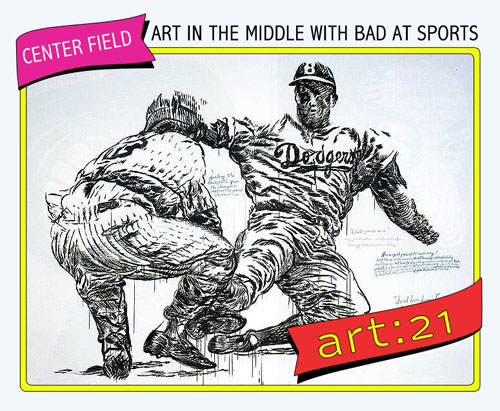

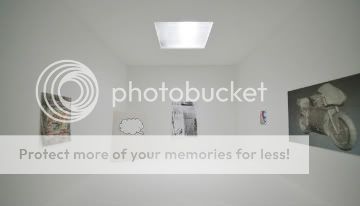
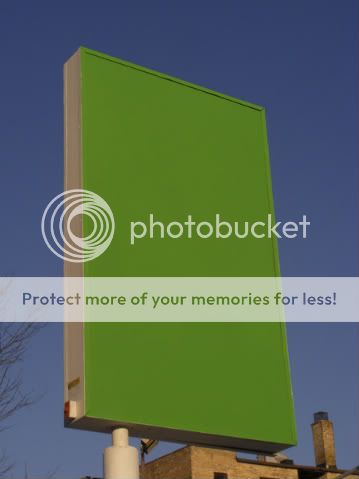
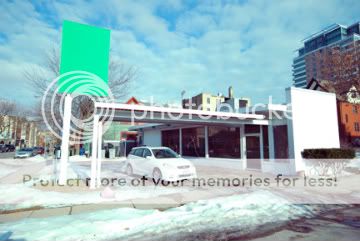
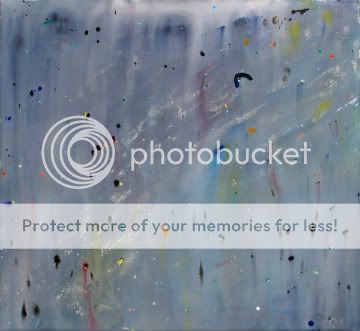
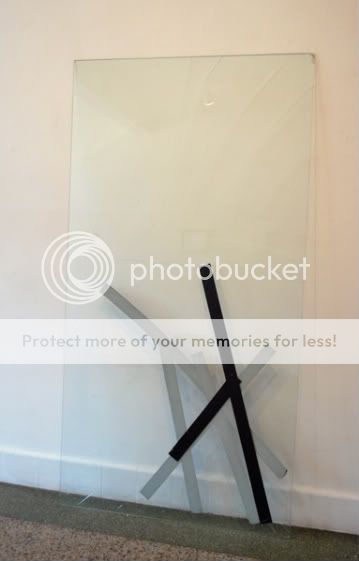



Pingback: John Riepenhoff at Marlborough Gallery, Lower East Side | New York Art Tours